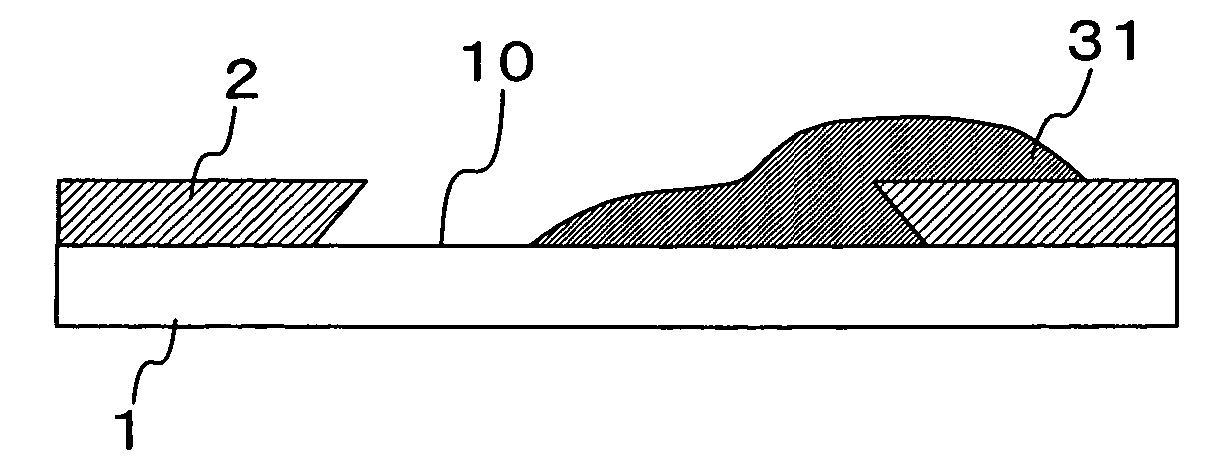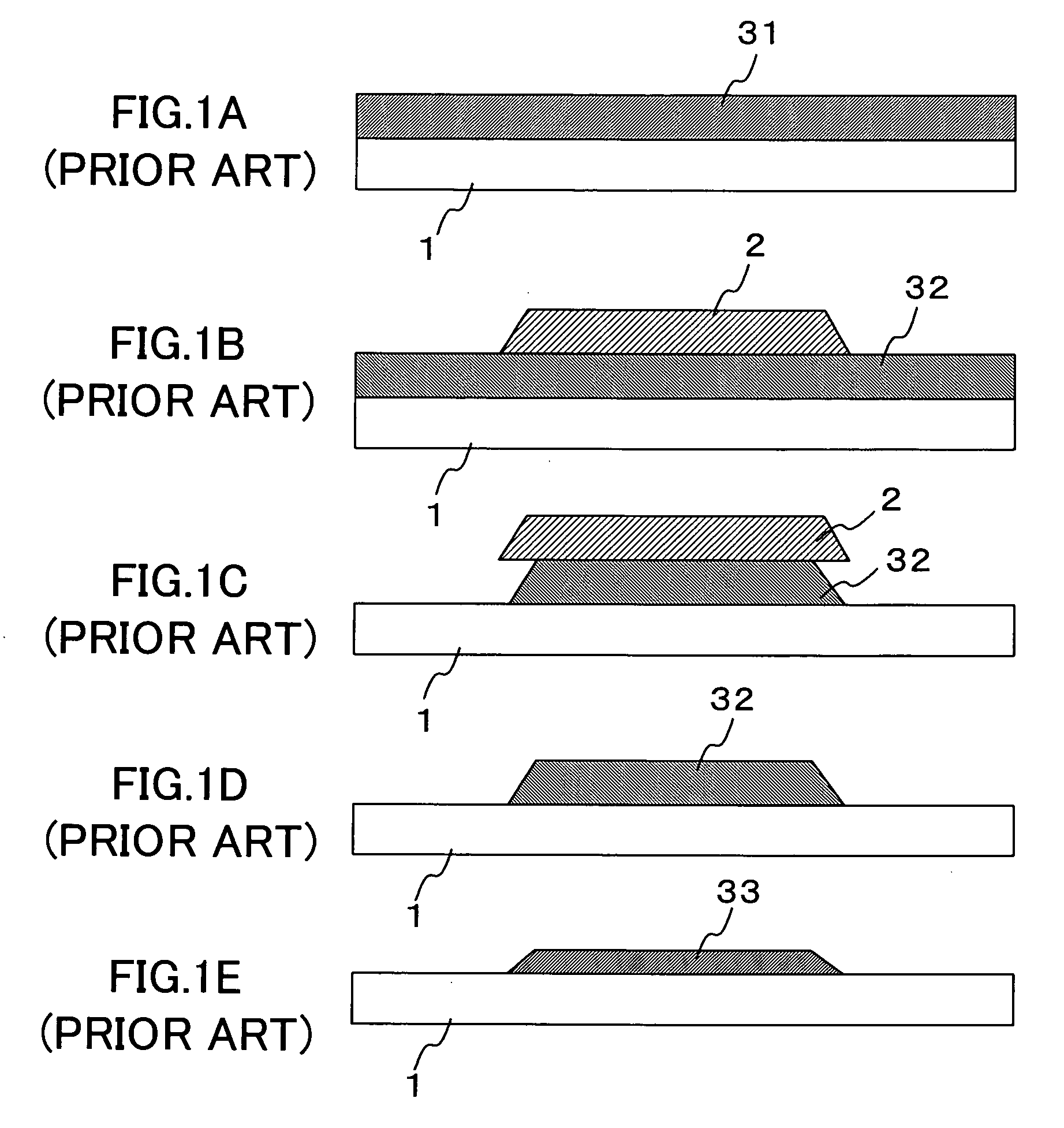Method of forming wiring pattern
a technology of wiring pattern and wire pattern, which is applied in the direction of non-linear optics, double resist layers, instruments, etc., can solve the problems of poor ink positioning accuracy, increased manufacturing cost, and increased manufacturing cost, so as to reduce the influence of ink positioning accuracy, prevent the generation of voids in films, and use ink materials more efficiently
- Summary
- Abstract
- Description
- Claims
- Application Information
AI Technical Summary
Benefits of technology
Problems solved by technology
Method used
Image
Examples
embodiment 1
Exemplary Typical Embodiment 1
[0039] Hereinafter, a first embodiment of the present invention will be described with reference to the drawings, in which the formation of a gate wiring on a panel substrate of a liquid crystal display device is taken as an example. First, as shown in FIGS. 3A and 4A, a photoresist 2 having a pattern as shown is formed on an insulating substrate 1 such as a glass substrate to partition it into an wiring region 10 for a gate wiring. This process is the first step of forming a wiring pattern, and is a lithography process through which the wiring region 10 is formed on the insulating substrate 1, the entire surface of which has been coated with the photoresist 2, by irradiating it with light or laser beams.
[0040] The photolithography process includes an application step of applying the photoresist 2 onto the entire surface of the substrate 1, an exposure step of exposing the photoresist 2, corresponding to regions other than the wiring region 10, to ligh...
embodiment 2
Exemplary Typical Embodiment 2
[0053] Next, a second embodiment of the method of the present invention for forming a wiring pattern will be described with reference to FIG. 5, in which the formation of a gate wiring on a panel substrate of a liquid crystal display device is taken as an example. In this embodiment, as shown in FIG. 5, only the cross-sectional views of a substrate 1 and a photoresist are shown, which are equivalent to those shown in FIG. 4A, described in the first embodiment. Because the cross-sectional views of the substrate 1, a photoresist formed thereon, and an wiring formed of an ink are similar to those described in FIGS. 4B to 4F, they are not illustrated in FIG. 5.
[0054] In the first embodiment, a negative photoresist with a reverse tapered cross section is used as the photoresist applied on the insulating substrate 1 in the photolithography process as the first step. In this embodiment, instead of using this negative photoresist, a positive photoresist is use...
PUM
 Login to View More
Login to View More Abstract
Description
Claims
Application Information
 Login to View More
Login to View More - R&D
- Intellectual Property
- Life Sciences
- Materials
- Tech Scout
- Unparalleled Data Quality
- Higher Quality Content
- 60% Fewer Hallucinations
Browse by: Latest US Patents, China's latest patents, Technical Efficacy Thesaurus, Application Domain, Technology Topic, Popular Technical Reports.
© 2025 PatSnap. All rights reserved.Legal|Privacy policy|Modern Slavery Act Transparency Statement|Sitemap|About US| Contact US: help@patsnap.com



